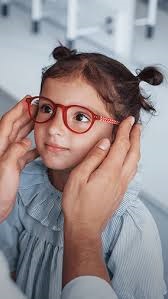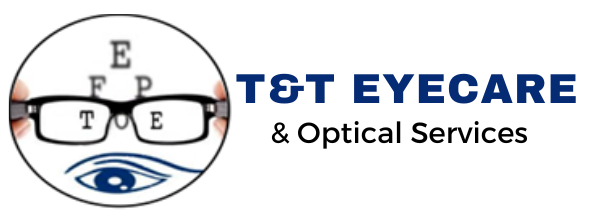Comprehensive Guide: Children’s Eye Health in Trinidad and Tobago
Introduction
 Eye health is essential for a child’s learning, development, and well-being. This guide blends global best practices with Trinidad and Tobago (TT) realities to help families understand when to seek care, what to expect at an eye exam, and how to foster lifelong eye health for their children. The content is designed to help parents find accurate information quickly.
Eye health is essential for a child’s learning, development, and well-being. This guide blends global best practices with Trinidad and Tobago (TT) realities to help families understand when to seek care, what to expect at an eye exam, and how to foster lifelong eye health for their children. The content is designed to help parents find accurate information quickly.
Why Eye Health Matters for Your Child
- Early detection improves outcomes: When caught early, many vision problems are easier to treat.
- Impact on learning: Clear vision supports reading, writing, and classroom participation.
- Prevention is better than cure: Regular eye care can prevent long-term visual impairment.
Global Best Practices in Eye Care
- Integrated pediatric eye care: Routine screenings for children as part of primary care.
- Comprehensive exams: Assess vision sharpness, eye alignment, eye health, and refractive status.
- Evidence-based treatments: When indicated, glasses, vision therapy, or medical/surgical interventions.
- Accessibility and equity: Outreach to underserved communities, including rural and underserved urban areas.
- Public health collaboration: Partnerships with schools, NGOs, and health ministries to promote eye health awareness.
- Quality and safety standards: Adherence to standardized testing protocols, infection control, and child-friendly environments.
Signs Your Child May Need an Eye Exam
Recognizing signs early can lead to timely care. If you notice any of the following, schedule an eye exam promptly.
- Squinting or tilting their head
- Frequent eye rubbing
- Holding books/devices too close
- Complaints about headaches or tired eyes
- Struggling in school despite effort
- Avoidance of near tasks or headaches with screen time
- Moving closer to the TV or chalkboard during lessons
- Covering one eye or tilting to see clearly at a distance
How TT Families Can Observe at Home
- Keep a record when symptoms appear (time of day, activities).
- Note improvements or worsening after a break or different lighting.
- Bring recent school work or report cards to discuss with the eye-care professional.
- Involve caregivers and teachers in spotting signs early.
What to Expect at the Eye Exam
A child-friendly, gentle assessment helps reduce anxiety and yields accurate results.
- Gentle, child-friendly assessment: A trained pediatric optometrist or ophthalmologist uses age-appropriate tools and non-threatening explanations.
- Tests for visual clarity, eye alignment, and eye health:
- Visual acuity tests (reading letters or shapes at a distance and near).
- Eye alignment and movement evaluation.
- Internal eye health checks (e.g., looking at the retina and optic nerve, screening for common conditions).
- Optional refraction tests to determine if glasses are needed.
- Comfort-first environment: Bright colors, friendly staff, and short, engaging sessions to keep kids at ease.
- Parental involvement: Guidance on results, next steps, and at-home practices.
What Parents Should Bring
- A list of current medications and any medical conditions.
- Recent vision tests or glasses prescriptions, if available.
- Insurance information or TT health coverage details, if applicable.
- A note about any concerns observed at home or school.
Treatment and Management Options
 Glasses or contact lenses: For refractive errors like myopia, hyperopia, or astigmatism.
Glasses or contact lenses: For refractive errors like myopia, hyperopia, or astigmatism.- As a clinician recommends, vision therapy is for specific alignment or focusing issues.
- Medical or surgical interventions: When indicated by diagnosis (e.g., eye conditions requiring medical treatment).
- Lifestyle and classroom adaptations: Adequate lighting, frequent breaks during near work, and regular eye-checkups.
Practical Steps for TT Families
- Establish a routine screening schedule:
- It is annual for most children, but sooner if risk factors or symptoms appear.
- More frequent follow-ups for children with known vision issues.
- Engage schools and communities:
- Advocate for school-based vision screenings.
- Share information about the importance of eye health with teachers and caregivers.
- Healthy eye habits:
- Limit screen time when needed and ensure breaks using the 20-20-20 rule (every 20 minutes, look at something 20 feet away for 20 seconds).
- Ensure children wear protective eyewear for sports.
- Maintain good lighting and ergonomic reading positions.
- Cost and access considerations in TT:
- Seek information on public health clinics, NGOs, and private providers with transparent pricing.
- Inquire about payment plans, bundled well-child visits, or school-based programs.
How to Choose an Eye Care Provider in Trinidad and Tobago
- Qualified professionals: Look for licensed optometrists or ophthalmologists with pediatric experience.
- Child-friendly environments: Clinics that describe a child-centered approach, with staff trained to work with kids.
- Clear communication: Explanations in simple terms, and multilingual options if needed.
- Transparent pricing and services: Clear exams, glasses, and follow-up care estimates.
- Accessibility: Proximity to home or school, and availability of appointment times that fit families’ schedules.







